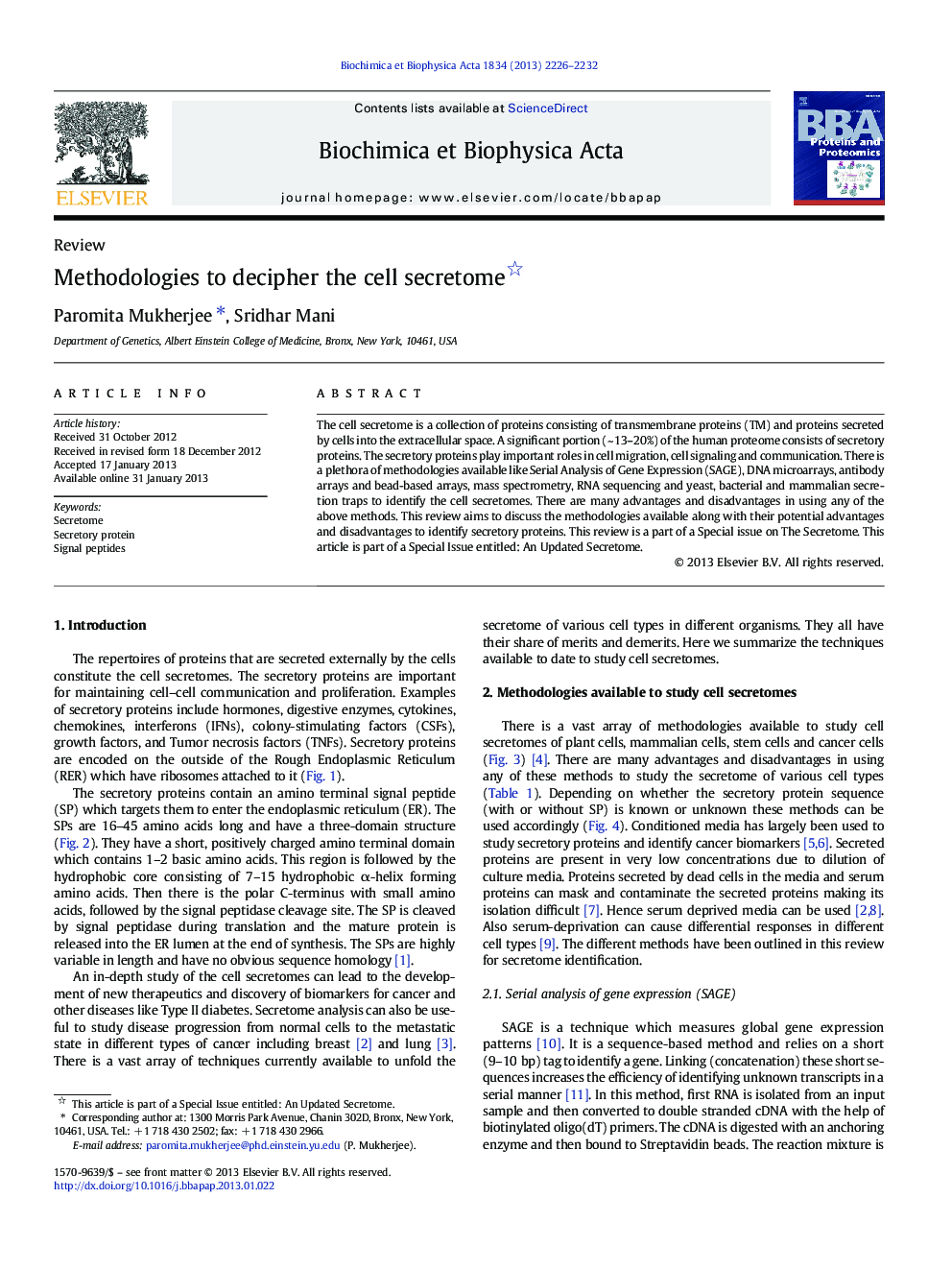| Article ID | Journal | Published Year | Pages | File Type |
|---|---|---|---|---|
| 1178456 | Biochimica et Biophysica Acta (BBA) - Proteins and Proteomics | 2013 | 7 Pages |
The cell secretome is a collection of proteins consisting of transmembrane proteins (TM) and proteins secreted by cells into the extracellular space. A significant portion (~ 13–20%) of the human proteome consists of secretory proteins. The secretory proteins play important roles in cell migration, cell signaling and communication. There is a plethora of methodologies available like Serial Analysis of Gene Expression (SAGE), DNA microarrays, antibody arrays and bead-based arrays, mass spectrometry, RNA sequencing and yeast, bacterial and mammalian secretion traps to identify the cell secretomes. There are many advantages and disadvantages in using any of the above methods. This review aims to discuss the methodologies available along with their potential advantages and disadvantages to identify secretory proteins. This review is a part of a Special issue on The Secretome. This article is part of a Special Issue entitled: An Updated Secretome.
► Secretome studies are significant for cell–cell signaling and biomarker discovery. ► We discussed different methods to characterize the secretome of various cell types. ► Merits and demerits of each method are highlighted.
